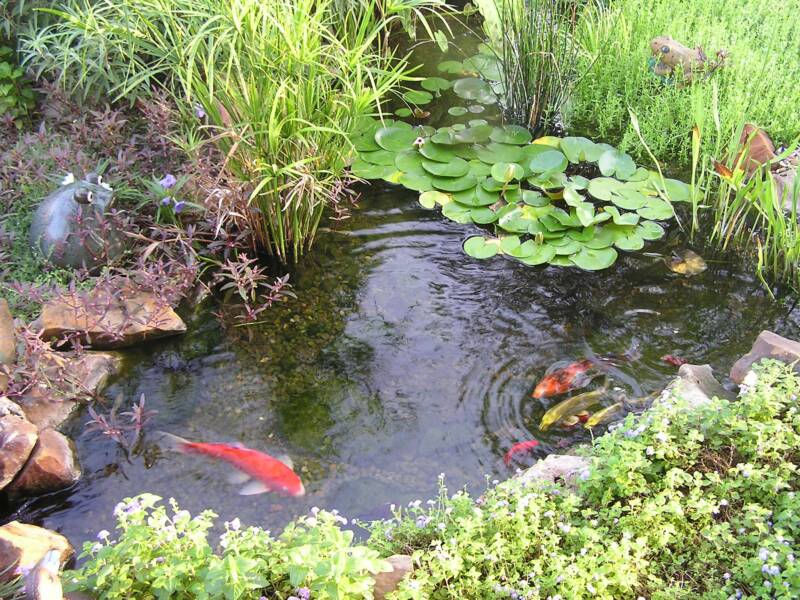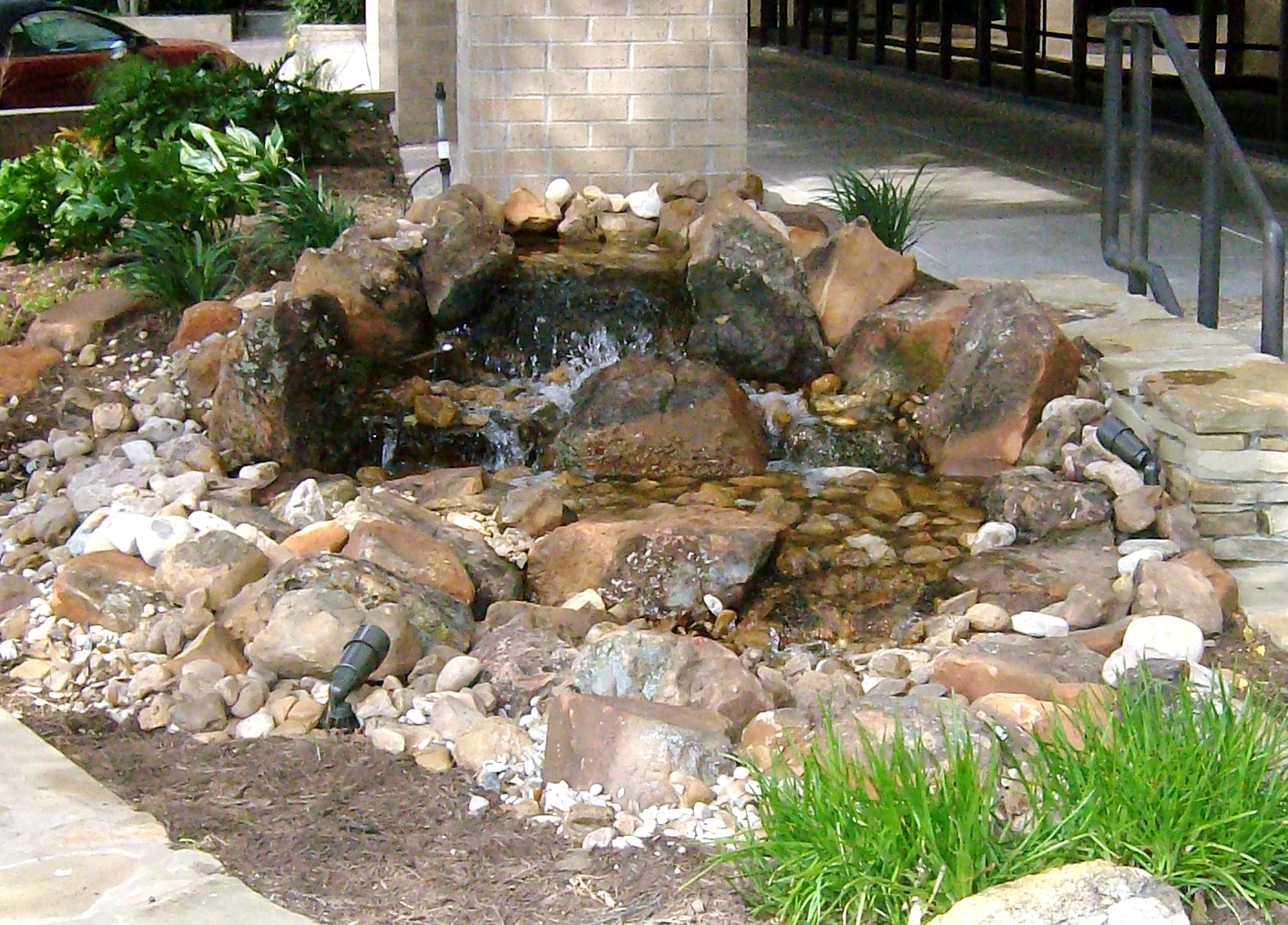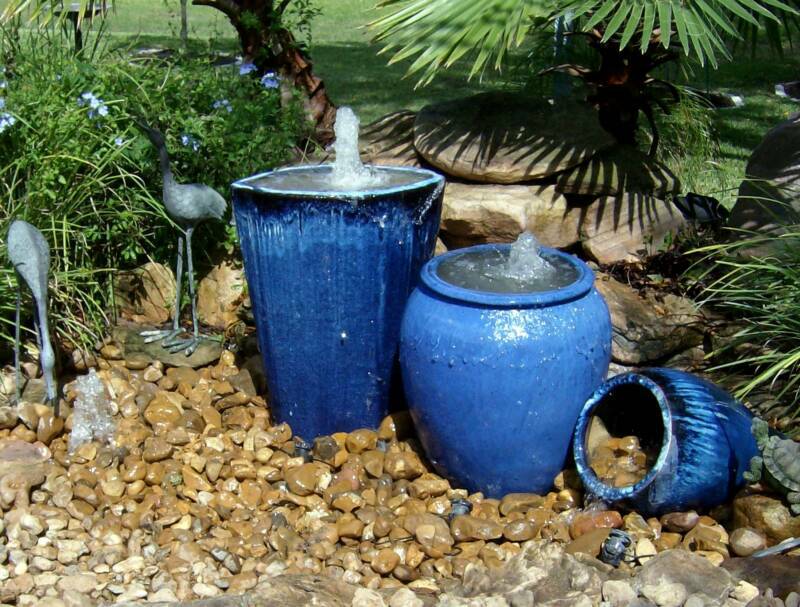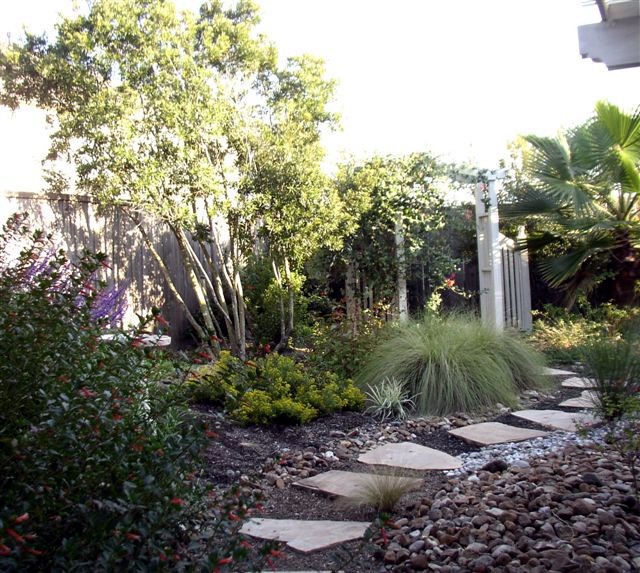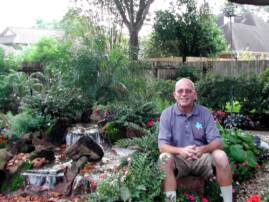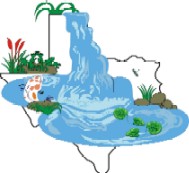


Rainwater Harvesting
Organic Ecosystem Ponds
Pondless Waterfalls
Urn and Fountain Features
Water-Wise Landscapes
Meet Your Water Feature Professionals


Texas Ponds and
Water Features
A Question of Balance
by Matt Boring
The Natural Water Gardener
TexasPonds.com
Balance is a word we hear a lot in our hectic everyday lives– balanced diet, balanced checkbook, balanced lifestyle, balanced pond ecosystem, and the ever-elusive balanced budget. What does it all mean? Where is this balance everyone seeks? Is it even possible to attain? With the eight-to-five, traffic-slowed rush that seems to make up the thin ice of modern life, what can we do to bring some of that balance back into our daily existence? Water gardening is one good way, and by really getting intimately in touch with the nature in our own backyard, we can spread some of that understanding and appreciation for the local and global ecosystem into the rest of lives and into the lives of our friends and neighbors. Please allow me to explain.
Those of us who practice organic water gardening with a balanced ecosystem approach know how relaxing it can be to have Mother Nature help keep our pond water clean, clear, and healthy. Our ponds are there for us, not the other way around. They stay clean on their own by virtue of the theory behind their design, a design based on nature’s own freshwater ecosystems. A balance is attained between the plants, fish, and beneficial bacteria living in the biological filter and on the rocks and gravel– just like in natural waterways. As long as the pond’s ecosystem stays balanced, our pond water will be clear. And it’s precisely because they stay clear on their own that it’s easy to tell if something goes out of balance. It’s just like a natural creek. It should be clean and clear, but if an overabundance of fertilizer run-off from neighborhoods and golf courses gets into it, it can quickly clog with algae, sometimes choking out the aquatic inhabitants within.
If something goes out of balance in an ecosystem pond, the first symptom will usually be an excess of string algae. It’s no big deal. It shouldn’t be something that’ll kill your fish. It’s just a natural indicator that something isn’t quite right within the system. Maybe you’ve been feeding the fish too much or you’ve made the mistake of fertilizing the aquatic plants. Perhaps there’s a small leak that’s developed due to settling, causing the automatic fill valve to continuously add fresh water, and therefore fresh nutrients, to the system. It could just be one of those times of year, usually a couple of weeks in the spring and fall, when the climate changes and the plants and bacteria aren’t competing as actively for the available nutrients in the water. After a while we know our system well enough to know if it’s a symptom showing that something’s wrong or if it’s something that will go away after the system re-balances itself after a climatic change.
If you choose to attack the symptom, let’s say suspended or string algae, and ignore the root problem (an unbalanced pond), you’re most likely setting out on a long, expensive, and frustrating journey. You may decide to get a UV sterilizer or some chemical algaecide. Neither of these is natural– bombarding your fishes’ home with radiation or chemicals. The result will be that your water gets clear....at first. But after the initial algae kill, what happens to the dead algae? It settles to the bottom, and since it is an organic material, decomposes, and releases its stored nutrients into the pond water.
Now you have a lot more available nutrients in the water to feed another algae bloom, this one worse than the first! You’ll need more algaecide each time. Do that a few times, and you have an artificial algae cycle– an endless battle– where you beat the algae back with deadly force, but it returns from the grave even stronger than before! Your pond is now chemically addicted. This cycle will leave you frustrated, often confused, and your wallet lighter. And you still haven’t addressed the root problem that caused the algae in the first place.
Rather than merely treating the symptoms, we should go to the root of the problem. Any time you have excess string algae or green water there is only one root problem– too many available nutrients in the pond water! If nutrients weren’t available to the algae, it couldn’t grow– it’s that simple. We can then check for leaks, adjust how much fish food (if any) we’re adding, reduce the fish load, add aquatic plants, or whatever we know our individual system needs. No one knows their pond’s system better than its owner and no two are exactly alike.
Only the owner knows if he or she is feeding the fish more than before, or if their aquatic plants are starting to go dormant for the winter. They should also be aware of whether they’re having to add water to make up for leak-associated water loss. The effort required to fix the problem is minute, once you’re aware of the problem, and you are soon able to return to relaxing beside your pond– not working on it!
Now how do you bring that concept of balance into your daily life? First, it takes some honesty with yourself about the factors that are throwing things in your life out of balance. When I spoke to the North Texas Water Gardening Society a few years ago, I compared the balanced pond ecosystem to the human body. When everything is balanced and working correctly, it’s a sight to behold, a real miracle of nature. However, if we put things into the system that throw it out of balance– alcohol, tobacco, and caffeine are fine examples with almost immediate results– we will soon experience the symptoms of an unbalanced system. Then, if we choose to ignore the root problem, we can end up on that long, frustrating, expensive, and sometimes addictive journey.
Like everything in nature, your body is designed to be a naturally balanced system. When you eat the right foods in the proper amounts and take in plenty of fresh water, what happens? You have plenty of energy. Your weight remains stable. Your skin is clear. And that’s just the stuff on the outside. Inside, your body is functioning more like it should because you are only putting into the system what it needs.
Perhaps you have a headaches. The root cause of these headaches could be eye strain from needing glasses. You choose to treat the symptom-- the headache-- and ignore the root problem– the need for eyeglasses. You try over-the-counter pain medication. Sure, it relieves the symptoms and the pharmacist makes some money, but when the medication wears off, the symptoms return. Perhaps you try chiropractors or therapeutic massage, but the symptoms return. How much easier would it be to treat the root problem, get some glasses, and get back to enjoying your life?
If I spend all my time on work and almost no time on myself, my life becomes unbalanced. I don’t have any time to spend with my family and friends, to walk by the lake, go on camping trips, or to hike through the Texas Hill Country. These are the things from which I draw my strength, my balance. Relaxation doesn’t usually come from devoting all my attention to work, but from being more in touch with nature and the natural systems in my life.
Learning to bring our lives into balance, and keeping them there as much as possible, can help us remain healthier human beings– mentally, physically, and also spiritually! Even within the fast-paced structure in which we are forced to live our lives, you can lead a happier, healthier, more relaxed and enjoyable life by just taking some time for yourself to simply stop, think, and keep your system balanced!
Happy Pondering!

